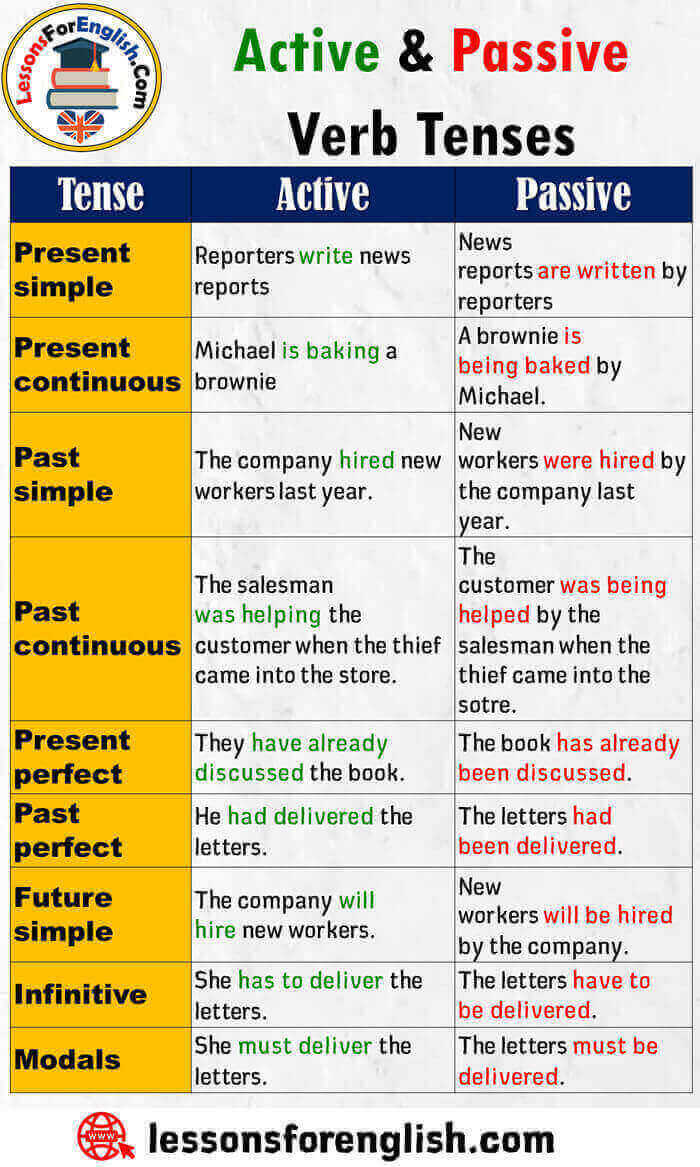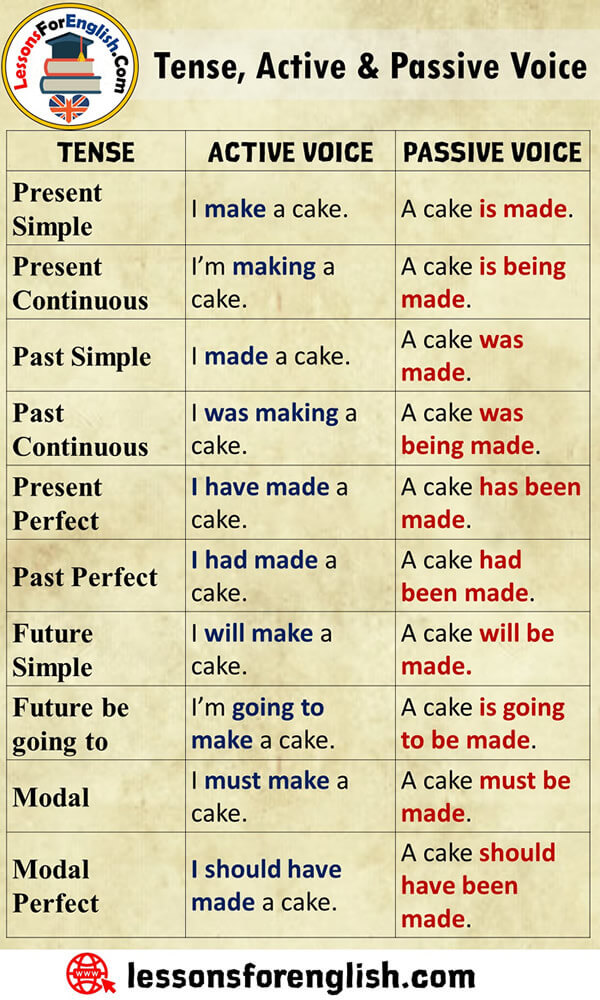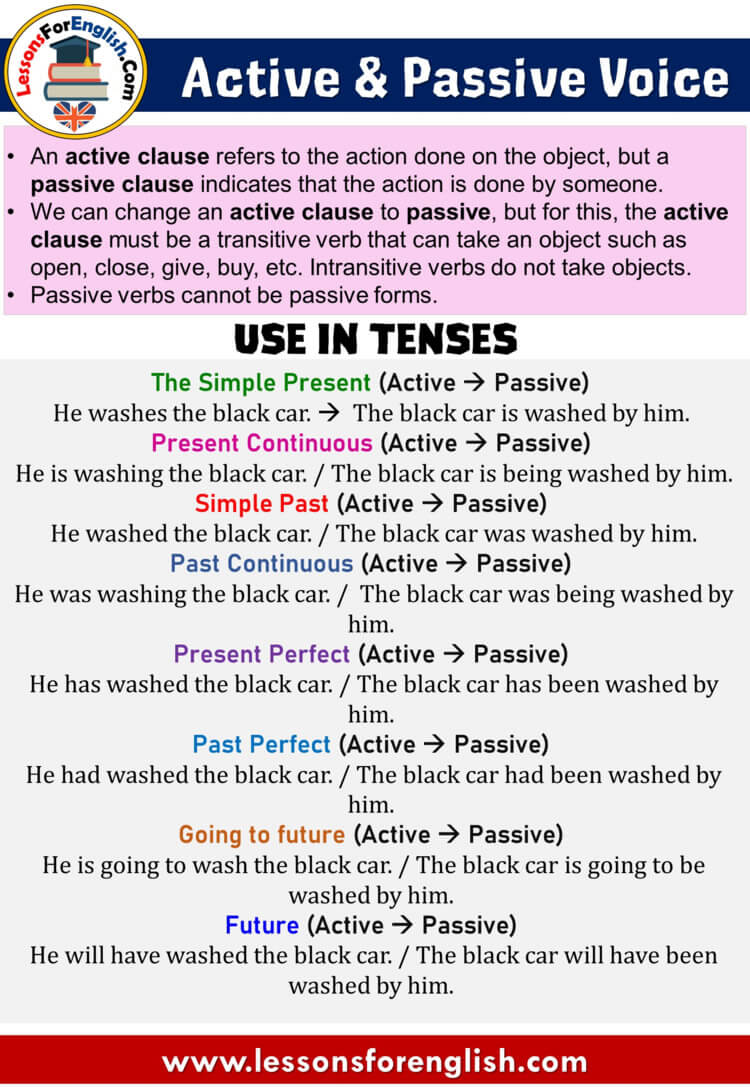Active Voice and Passive Voice, Definition and Example Sentences

Table of Contents
Active Voice
- When we describe the situations and actions we will tell from the perspective of the person or object that acts, it is often correct to use active voice verbs.
- The most important features of active voice sentences are that they reflect a clearer, harder and stronger meaning to the reader.
Example Sentences
- I love reading books. Would you like to offer me some books?
- Is that so? I love reading books too. There are a few books I’d like to offer you. Have you read Da Vinci’s Code before?
- No, I’ve never heard of this book. Reading this book might be a good idea.
- Exactly! I’d like to buy this book as a gift.
- Thank you so much!
Passive Voice
- Passive Voice is used in sentences in which the object affected by the action or situation becomes the subject.
- Passive Voice is used in sentences in which the object affected by the action or situation becomes the subject.
Example Sentences
- All the students in the class love Smith. (Active)
- Mr. Smith is loved by all the students in the class. (Passive)
- Women love chocolate. (Active)
- Chocolate is a dessert loved by women. (Passive)
- People use the Internet to learn and share new information. (Active)
- The Internet is used by people to learn and share new information. (Passive)


